Once under the viaduct's shadow, businesses can see the waterfront now
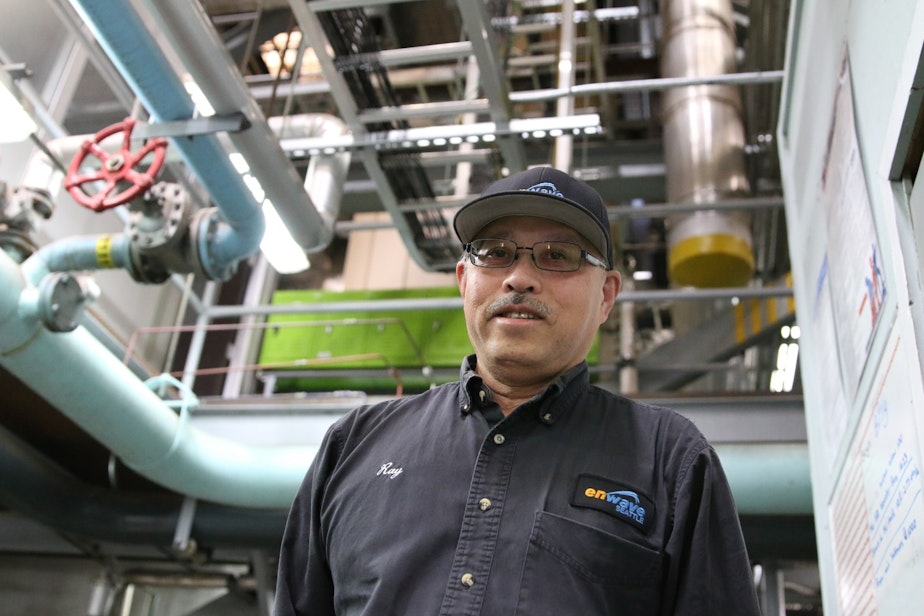
The Alaskan Way Viaduct used to tower over the businesses on Alaskan Way. Now, 70% of the viaduct has been demolished.
Businesses that once hid in its shadow have become a lot more visible.
When the viaduct is gone, you see businesses that you never noticed before. Like the 100-year-old steam plant on Alaskan Way. With the viaduct gone, you can see its multiple chimneys and its utilitarian gray facade, with an intimidating windowless gray door and a rubber doorbell.
I pressed the doorbell, which made an embarrassingly loud buzz inside. A minute later, a very surprised engineer named Ray Lee opened the door.
He told me that Enwave, formerly Seattle Steam, makes steam here to heat buildings downtown and in Pioneer Square. The steam travels under the streets through pipes, some still wrapped in bark for insulation.
Lee invited me inside. It's not every day these folks get a visitor. "If it's silver, it's probably hot, so don't touch it," warned his boss as we passed.
"Have you seen the combuster?" Asked engineer Dave Reber. "You've got to see the combuster."
He took me up staircase, where we stood beside a large metal cylinder several stories tall. He explained that the combustion chamber holds a 30-ton tornado of molten sand, heated to 6,000 degrees and blown around by fans on the bottom. This firestorm instantly incinerates the sawdust that Reber and Lee pump into it.
"I mean, it’s so hot – it’s like lava, in there," Reber said.
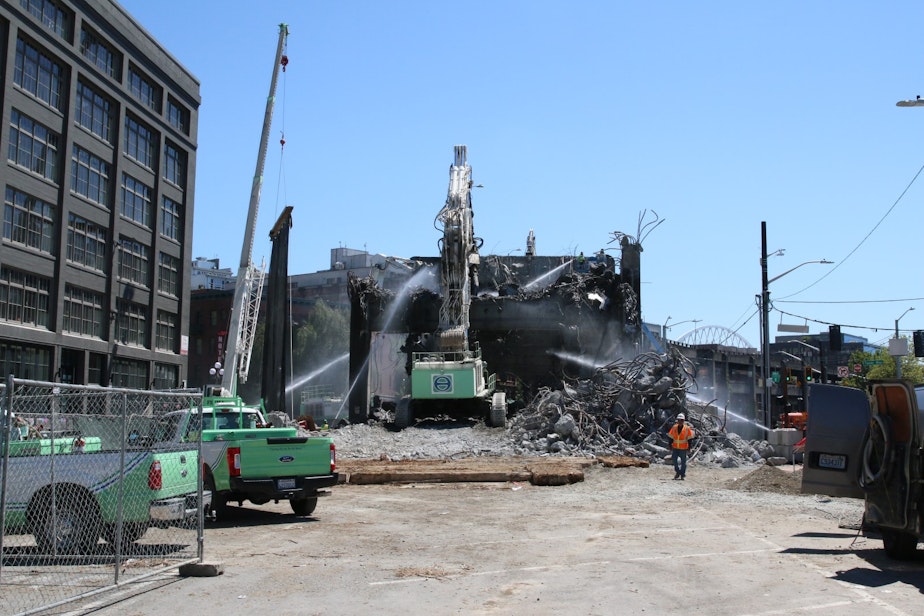
So what does it take to impress the guys who manage a tornado of lava? How about the giant claw contractors used to break the viaduct into pieces.
Lee showed me videos of the destruction on his phone, as if they were photos of his grandkids.
As the claw moves south towards Pioneer Square, workers on Alaskan Way, who’ve sat at their desks in Viaductian shadow for years, are seeing the waterfront in a new light.
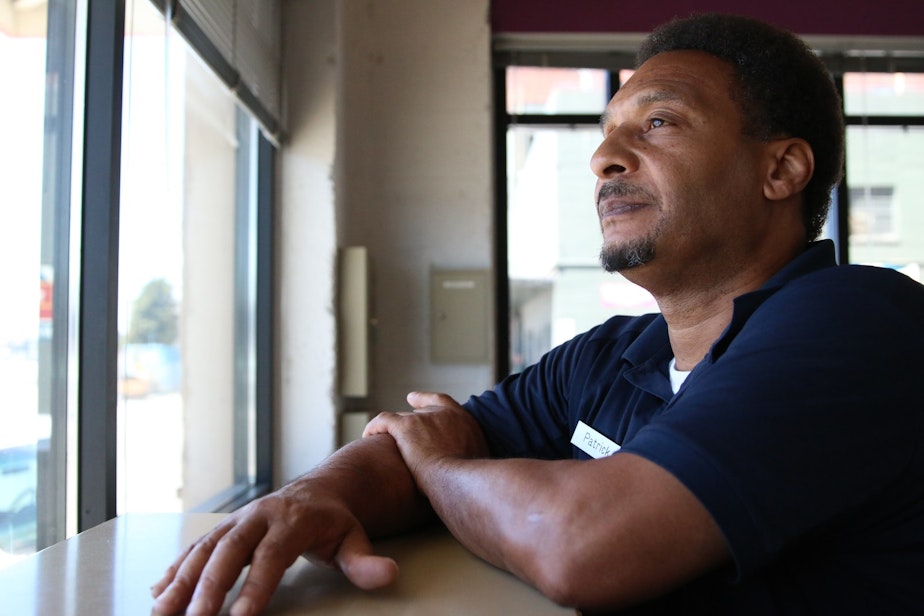
“It was like, wow – this is what it looks like without that viaduct,” said Patrick Martin, referring to the day he first saw the new view from his office.
Martin's desk at a the Public Storage Building on Alaskan Way used to be in perpetual shade, and he could see just the foot of the ferris wheel.
“Before, when the viaduct was here, I’d take a couple glances at it," he said. But today, he has a million dollar view. "Now that it’s gone, it’s so much brighter, you’ve got so much more vision that you can actually get stuck people-watching.”
And there are so many people to watch. Tourists stream down the narrow metal staircase linking Union Street to the waterfront. Then they wander down the middle of the street past his loading dock.
Union is one of many streets expected to see a lot more pedestrian traffic in the future. The city plans to give it an upgrade. Instead of forcing people down "those ridiculous steps," as Martin describes them, the city will put in much wider steps and an elevator.

Many of the east-west streets connecting Seattle to the waterfront are going to get updates.
Marshall Foster, who is with Seattle’s Office of the Waterfront, said Main and Washington Streets will see the most change.
“We’re going to really widen those sidewalks and rebuild those streets from building face to building face," he said.
Foster said today, most people approach Pioneer Square via First Avenue. But visitors to the waterfront are expected to double after it's built out. This could make the east-west streets — that once served as a noisy and dingy side entrance to Pioneer Square — the neighborhood's most popular entry point.
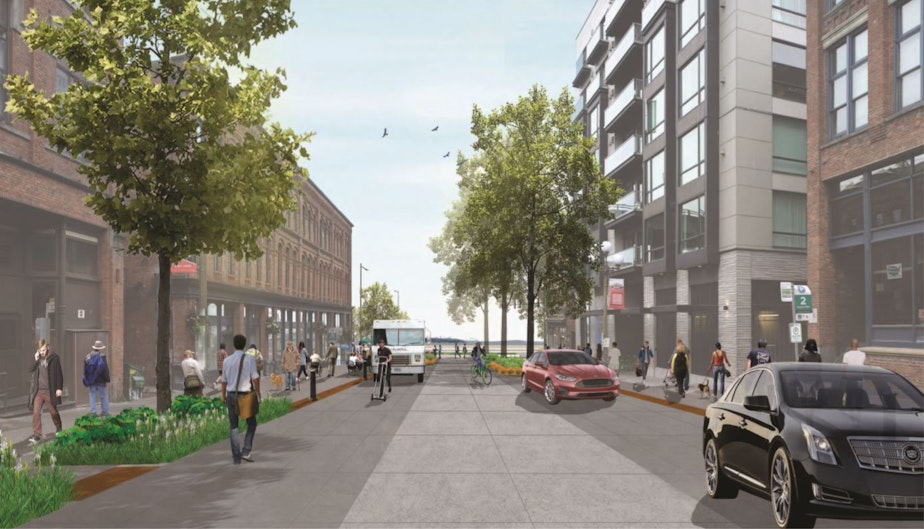
All these improvements have been hard on some businesses. There was long construction period for the seawall, for example, followed by the noise and traffic disruption of the viaduct demolition.
Public Storage manager Martin said he had to wash his car every day, after parking at work, from all the dust.
Today, there are a lot of vacant storefronts along Alaskan with "for lease" signs in the windows. And with tech companies like Big Fish moving their offices above those shops, the waterfront may be going upscale.
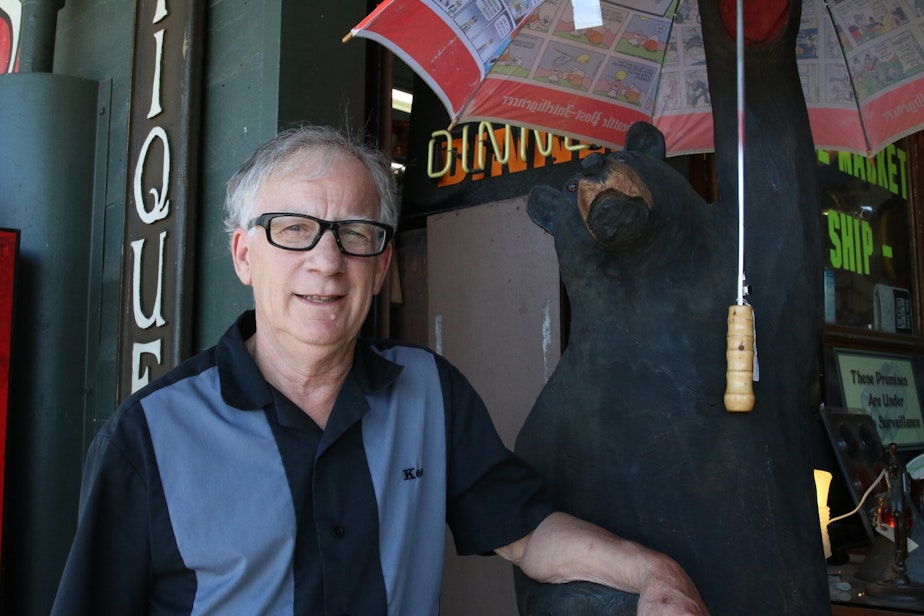
Ken Eubank has run an antique store under the viaduct for 40 years. He has a great view of the waterfront. But his future is much less clear.
“I don’t know what’s going to happen," he said. "The landlord hasn’t said a word to me about his future plans. He knows that if he asks me for another dollar, I’m gonna close the business.”
But Eubank said for him, retiring wouldn’t be the end of the world. And he said it’s worth it, for what we got out of the deal: A view of Seattle’s skyline that has stood hidden behind the viaduct for so long.
"Now you can see all of the buildings from the 20s and 30s that you didn’t even know about," he said. "I was shocked. I didn’t anticipate that. And it’s a beautiful city."
You can see and comment on the proposed road redesigns for east-west streets connecting the waterfront to Pioneer Square at an open house Tuesday evening, July 30.
KUOW reporter Joshua McNichols is always looking for story tips on his housing, transportation and tech beat. Reach him at jmcnichols@kuow.org.




